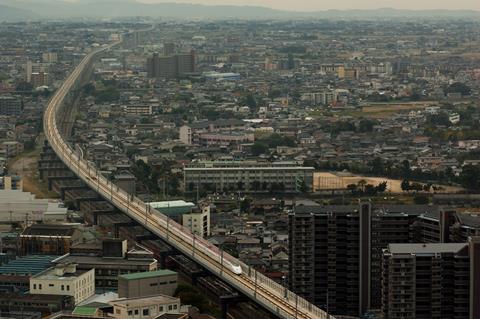
JAPAN: East Japan Railway announced on August 26 that it intends to carry out remedial work on several elevated concrete structures across its 1 067 mm gauge conventional network, complementing similar work already underway on the Tohoku and Joetsu Shinkansen routes.
JR East started repair work in January on pillars supporting the two high speed lines. It believes that inaccurate calculations of the deflection of the reinforced concrete support pillars during seismic disturbances were used when the two lines were built in the 1970s. This means that the pillars are at risk of shear faults occurring during earthquakes, and the longer the span, the greater the deflection range.
Having detected the fault on some Shinkansen structures, JR East undertook inspections of similar pillars at various locations on its conventional network. It has found the same problem at a number of sites, although the railway has not provided details of the lines affected.
On long spans used on the Shinkansen routes, over 100 mm of deflection is allowed for. In all 30 locations have been identified for remedial work, and JR East has already started reinforcing some of the 276 pillars considered to be at risk. This is done by bolting steel plates to the pillars as a form of cladding.
Long sections of the both the Joetsu and Tohoku Shinkansens are built on these elevated structures, particularly when passing through urban and semi-urban areas, thus minimising land take.
This is not the first time that the Shinkansen network has encountered problems with reinforced concrete structures.
In October 1999 there were instances of concrete falling from a tunnel lining in northern Kyushu on the Sanyo Shinkansen, prompting a check of all 142 tunnels between Hakata and Shin-Osaka. Many of the bridges and viaducts on this line built in the early 1970s have exhibited concrete spalling, and it was found that the concrete mix had not been properly desalinated.

















